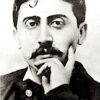Robert Louis Stevenson is one of the most celebrated authors of all time.
His writings, which explored themes such as adventure, morality and human relationships, have been read and cherished by millions. From his classic novel “The Strange Case of Dr Jekyll and Mr Hyde” to his beloved children’s tale “Treasure Island,” there is something for everyone in Stevenson’s works.
In this article, we will take an in-depth look at the life and writings of Robert Louis Stevenson. We will explore his inspirations, his struggles, his successes and his impact on literature. We will also provide insights into how to appreciate and enjoy his works as a reader or writer.
Discover why Robert Louis Stevenson earned the title of master storyteller with this guide to the life and work of one of literature’s greatest minds!
Overview of Robert Louis Stevenson’s Life and Career
Take a journey through the life and works of Robert Louis Stevenson, the renowned Scottish novelist and poet. With over 80 works of lasting significance and influence, Stevenson was an incredibly prolific writer. From his childhood in Edinburgh to his final years spent in the South Pacific, Stevenson crafted stories that touched on themes of morality, faith, and human experience.
He was born in 1850 to a successful family of engineers with deep roots in Scotland’s religious past. His schooling included legal studies at the University of Edinburgh but he never completed his degree as he was drawn to literary pursuits instead. In 1875, he published his first novel An Inland Voyage which earned him critical acclaim as well as two essays -Travels with a Donkey in the Cevenne and Catriona – both based on his own travels across Europe.
In 1879, he released Treasure Island to wide acclaim which would become one of his most popular works. The success of this novel allowed him to move to London with his wife Fanny Osbourne who would become a muse for his art over their shared lifetime. This period marked a shift in Stevenson’s writing toward darker themes such as crime and horror which can be seen in works like The Strange Case of Dr Jekyll and Mr Hyde (1886). It was during this time that he also became deeply involved with spiritualism which informed many of his later novels including Weir of Hermiston (1896) published posthumously due to its controversial subject matter.
Investigating the Elements of Gothic Horror in Stevenson’s Writing
As you explore Robert Louis Stevenson’s innovative and thought-provoking writing, you’ll discover the elements of gothic horror he was known for. These carefully crafted stylistic features help create an atmosphere of suspense, dread and distress that captivates both readers and audiences alike.
His stories center around mysterious plot points, leaving readers with unanswered questions, a sense of unease, and a desire to uncover the truth. He also incorporates supernatural elements with eerie characters that hint at hidden secrets and histories.
Even the physical settings of his stories invite suspense as they become integral parts of the story by giving readers a glimpse into a hidden or forgotten past – something that’s often terrifying or unknown.
By playing on elements of fear, Robert Louis Stevenson examines taboo topics in ways only horror could adequately portray. His use of terror is much more than mobs of zombies or flying vampires – it is an analysis of moral gray areas in order to bring attention to important social issues that require serious discussion.
Stevenson’s Use of Symbolism and Metaphor
Robert Louis Stevenson was a master of symbolism and metaphor, often using these literary devices to communicate his ideas in a more profound way. In his widely acclaimed work, “The Strange Case of Dr. Jekyll and Mr. Hyde,” Stevenson describes the battle between good and evil as represented by two different people, symbolizing the struggle within each of us to do what is right and find balance between our two sides.
He also employed metaphors to illustrate complicated philosophical concepts. In “Treasure Island,” for example, he uses a journey to an island as a metaphor for life’s journey from childhood to adulthood. Stevenson also uses symbols to represent abstract themes such as bravery and courage; in this same novel, he uses the skull and crossbones symbol as a representation of fearlessness.
The complexity with which Stevenson uses symbolism and metaphor makes his work both engaging and thought-provoking. His use of figurative language helps bring an added layer of meaning to his stories, which continue to be some of the most beloved works in English literature today.
Robert Louis Stevenson’s Popularity and Legacy
The impact of Robert Louis Stevenson’s work is still felt today and his popularity shows no signs of waning. He has been acclaimed as one of the greatest authors of his time, having had his works adapted into many forms of media and having a lasting influence on subsequent generations of authors.
His stories, like ‘Treasure Island’ and ‘The Strange Case of Dr. Jekyll and Mr. Hyde’, remain iconic in the world today, even more than a hundred years after their publication. In addition to his fantastic fiction, Stevenson’s non-fiction essays were also incredibly popular, particularly those related to travel and politics.
In terms of his legacy, it has been argued that Stevenson was a major influence on the development of detective fiction and Gothic horror storytelling styles for generations to come. His works remain an inspiration for aspiring writers around the world and his influence can be seen in books like ‘Harry Potter’ by JK Rowling and ‘The Hunger Games’ by Suzanne Collins.
Overall, it is clear that Robert Louis Stevenson left an indelible mark on literature with his remarkable works that continue to be read and appreciated to this day.
Examining His Most Iconic Works
Robert Louis Stevenson is renowned for his Gothic horror works, such as The Strange Case of Dr Jekyll and Mr Hyde and Treasure Island. These stories, considered some of the most iconic works of English literature, continue to captivate readers to this day.
The Strange Case of Dr Jekyll and Mr Hyde tells the story of a scientist who creates a potion that transforms him into an evil alter-ego that does immoral acts. This novel serves as an exploration into the duality of human nature and still resonates with readers today.
Treasure Island is an adventure novel that follows Jim Hawkins who, together with a group of pirates, sets sail for a place called Treasure Island in search for hidden gold. This novel has become one of the best-known works in pirate literature and has been adapted multiple times in different mediums.
These two novels have shaped modern literature and shaped Robert Louis Stevenson’s legacy as one of the greatest authors to have ever lived.
The Influence of Robert Louis Stevenson’s Writing on Contemporary Literature
Robert Louis Stevenson’s work has been widely influential on contemporary literature, from obvious landmarks like Treasure Island to less-well known works like The Strange Case of Dr. Jekyll and Mr. Hyde.
In particular, his exploration of morality, inner conflict and the gray area between good and evil has had a profound effect on modern fiction. His stories often feature characters who are thrust into difficult moral dilemmas, and his writing explores their psychological processes as they attempt to grapple with what is moral or immoral in the context of their particular situation.
Furthermore, he was a major proponent of writing in the vernacular – an approach that focuses on conveying complex ideas in simple language that can be easily understood by all readers. This style of writing has become a common hallmark of contemporary storytelling, embraced by authors both in fiction and nonfiction alike.
His talent for storytelling will not be forgotten anytime soon; over a century since the publication of his first novel, modern authors continue to be inspired by Robert Louis Stevenson’s work.
Robert Louis Stevenson’s presence in the literary world is still felt today. His novels, poetry, non-fiction works, and essays have inspired and influenced readers and writers alike. From the beloved “Treasure Island” to his exploration of his own mental health in “Dr. Jekyll and Mr. Hyde,” Stevenson’s works have set the standard for creative writing and storytelling. His works still fascinate and thrill readers today, and his impact on the literary world will continue to be felt for many years to come.























